Helsinki Central Library Competition - 3rd Prize Winner "LIBLAB" by Playa Architects
By Bustler Editors|
Thursday, Jun 27, 2013
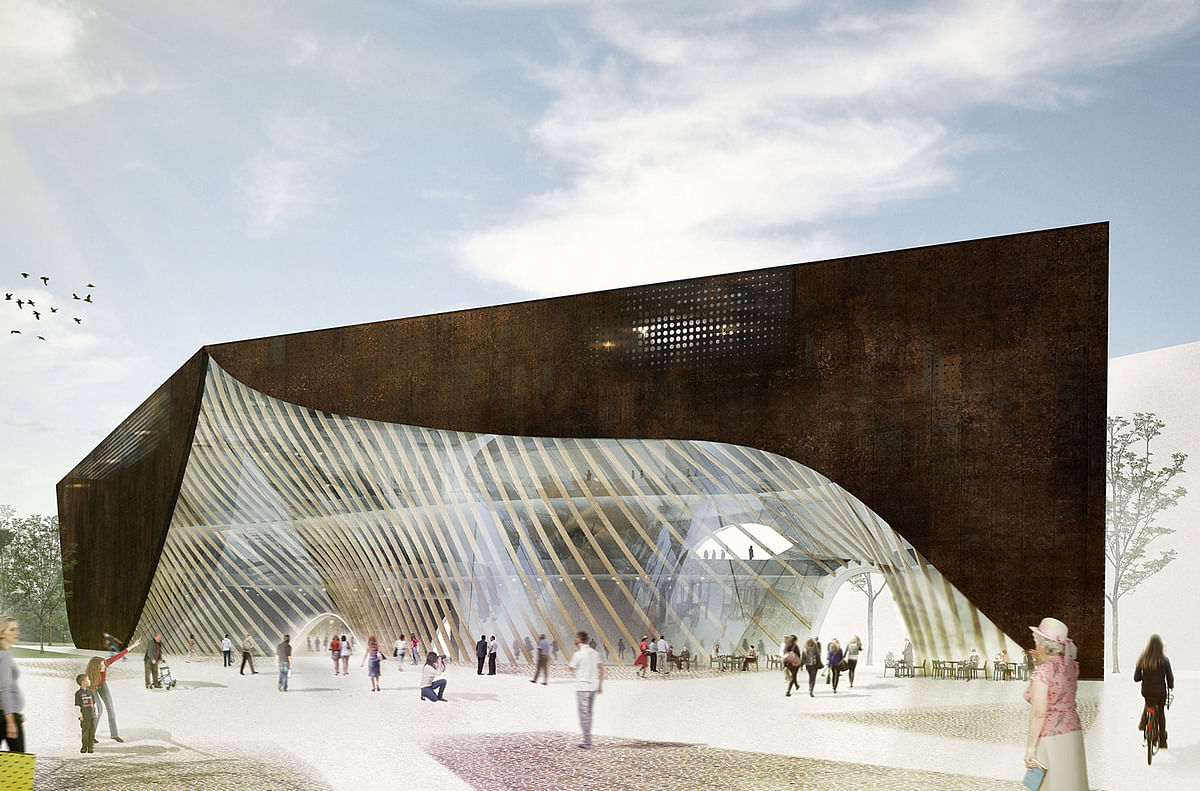
Related
In the recent competition for the design of the new Helsinki Central Library, the jury had decided not to award a Second Prize but to give a shared Third Prize to the entries ”LIBLAB” and "Kasi” instead (previously on Bustler). Helsinki-based Playa Architects are the designers behind LIBLAB and have sent us some more information about their design concept.
Project Description from the Architects:
The Cityscape
The New Central Library presents a simple but strong form, which fills out the given city block.
The design complements the existing urban fabric while preserving the positive aspects of the existing situation. The design takes into consideration both the small and the big scale of the surroundings. In smaller scale it creates new (covered) public spaces and in bigger scale provides an active and a distinctly recognizable addition to the cityscape.
The long view north towards the Finlandia Hall from the corner of Sanomatalo / Töölönlahdenkatu street is preserved by sculpting the southern edge of the block. This maneuver also creates an inviting and an easy-to-find entrance to the new library from the main directions of approach (the railway station and Mannerheimintie street).
The height of the new library is determined by the neighboring buildings and city zoning.
The railway warehouse’s ruin (Makasiinirakennus) has been taken into consideration in the design. The two covered plazas created by the new library extend to the bigger Makasiini-plaza surrounding the ruin and thus offer it new possibilities of use in connection with the library.
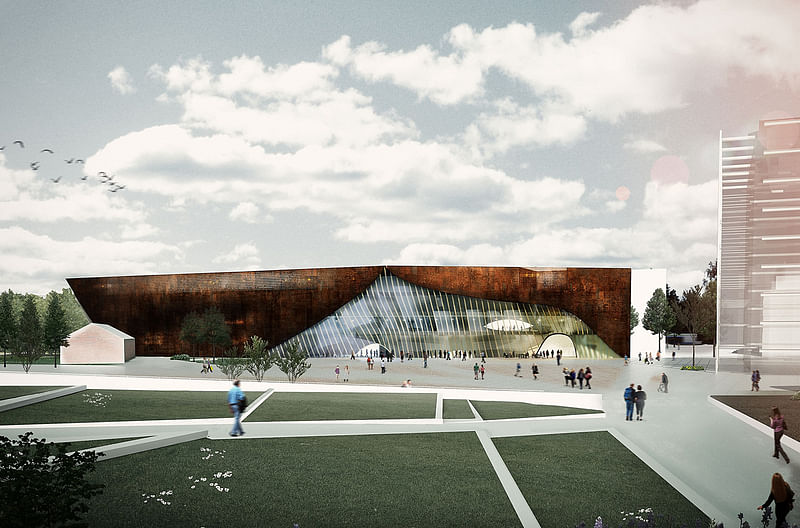
The Building
The library is a sculpture-like building of joyful architecture that is both modern and innovative, functional and humane as well as sustainable.
The building mass is sculpted to create two large scale openings and new public plazas - to the northwest and to the southwest. The southwestern covered plaza contains the main entrance, extends the Makasiini-plaza and offers great views towards the Kiasma and the Parliament building. The northwest covered plaza functions as restaurant terrace and offers great views toward Finlandia Hall and park.
The ground level (1.krs) contains the immediate public functions and creates an inviting and lively atmosphere with the intertwining public space. The open and active ground level can be accessed from all directions. The ground level is connected to the lower level (-1. krs) with the cinema and exhibition spaces. This lower level can easily be connected to the possible underground multipurpose space.
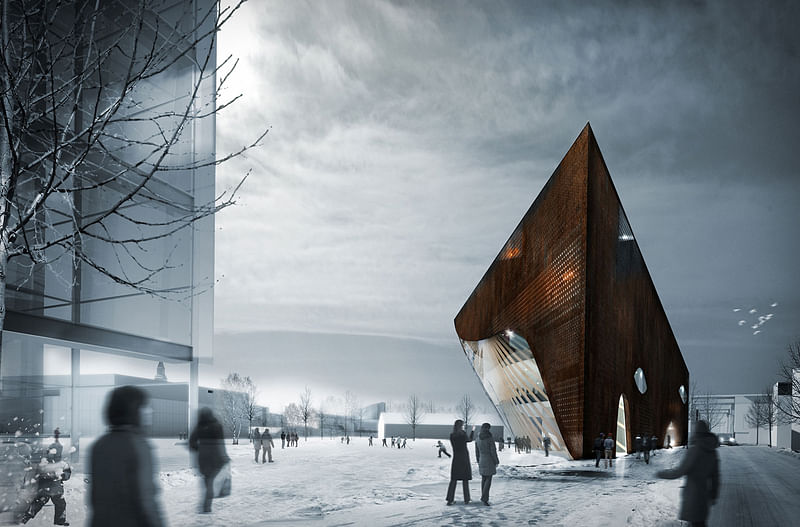
The main public areas are concentrated on the west side of the building in connection with the two large scale openings to provide natural light and unobstructed views. The secondary and service spaces (stair cores, elevator and technical shafts) are located on the east side of the building.
The spaces are organized vertically so that the quieter spaces are situated towards the top while the noisier areas are close to the most public functions.
The floor height varies depending on the functions and spaces situated on each floor to provide certain spatial hierarchy and flexibility and modifiability.
The carefully placed voids offer varying heights, views and spatial experiences between the floors. They also enable the user to observe the ongoing activities throughout the building and help in orientation.
Second floor (2.krs) contains the “childrens´ world” and personal office area. The second floor is more connected to the main lobby for easy access and to compliment the ground level functions.
The collections area is situated on third floor (3.krs). The floor plan is open and floor height is increased for better flexibility and modifiability. The double height lounge spaces are located at both ends in connection with the large glazed facades to provide natural light and spectacular views. In addition to these views the floor is provided with a big opening to the east for a view between the office blocks to Kaisaniemi.
In addition to the quiet areas and staff facilities the top floor (4. krs) contains the public sauna and several rooftop terraces which offer extensive views to the city.

The façade is of copper and glass. Both materials have exceptional lifespan and low "whole of life " costs.
The copper facade is pre-oxidised. The pre-oxidation gives copper straightaway the same oxidised light brown surface that otherwise develops over time. The color darkens during the lifespan and can result in development of green patina. A good example of this natural development is the Dipoli-building in Otaniemi. Dipoli's facades are just starting to get green patina after 40 years.
The copper facade is partly perforated and varyingly patterned and textured. The perforation (pattern and percentage) varies according to spaces and orientation to prevent solar gain and glare to the interior but also to allow views and natural light.
The facade creates a consistent exterior quality. During the night and the winter season the facade will appear more open with light glowing within.
The large glazed parts of the facade offer great views to and from the library and help to communicate the activity within the building. The large glass surfaces have integrated sunscreen and are also at a negative angle to reduce excess heat. Laminated timber posts supporting the glazed facades are also part of the building's supporting structure.
The street (Töölönlahdenkatu) facade is more contained but the ground level is welcoming with an entrance recess and a vaulted opening to the plaza.

Service and traffic
Traffic access to the service and loading area in the basement is from Töölönlahdenkatu street via a ramp inside the block. The one-way ramp is traffic light controlled. The loading area is well connected to the elevators and internal service spaces.
Drop-off zone is located on the southern edge of the block (Eero Erkon katu street) adjacent to the building's entrance plaza.
Bicycle traffic is situated on the east side of the block while the main pedestrian route is directed to the west side of the block.
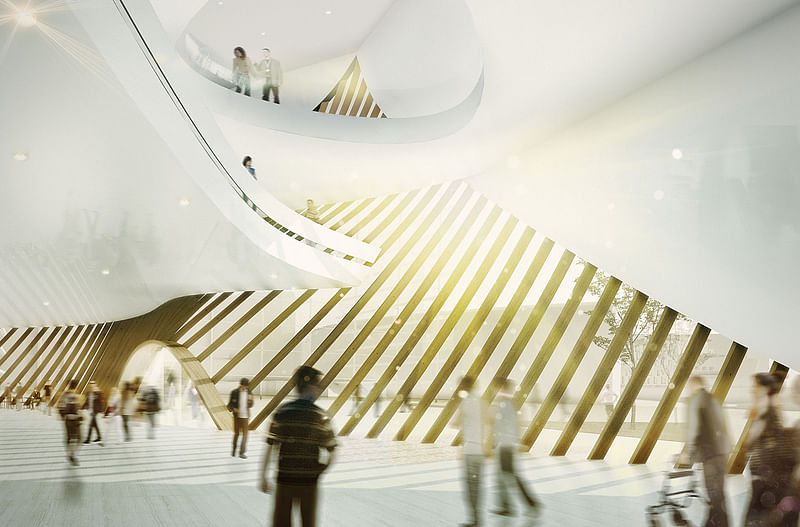
Project Credits:
Project title: LIBLAB
Authors: Playa Architects (Johanna Ojanlatva, arkkitehti SAFA, Veikko Ojanlatva, arkkitehti SAFA, Tuukka Vuori, arkkitehti SAFA)
Design team 2nd stage: Ulla Seppä, arkkitehti SAFA, Pauliina Kujala, arkkit. yo, Andres Lira Vigneaux, arkkit. yo
Design team 1st stage: Ulla Seppä, arkkitehti SAFA, Ulla Kuitunen, arkkitehti SAFA, Jukka Kangasniemi, arkkit.yo, Otto Autio, arkkit. yo
3D-modeling: Jarno Vesa, arkkitehti
Visualizations 2nd stage: LUMART / Lorenzo Servi, arkkitehti
HVAC expert: Johannes Helander, DI / Wise Group Finland Oy
Structural expert 2nd stage: Tero Aaltonen, DI / Finnmap Consulting Oy
Scale model: Alphaform RPI Oy
Copyrights: Playa Architects
Find also plans, sections, and elevations of LIBLAB in the image gallery below.
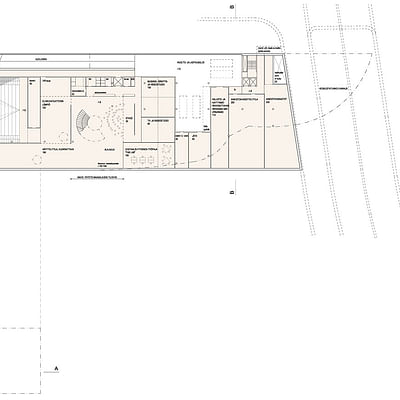
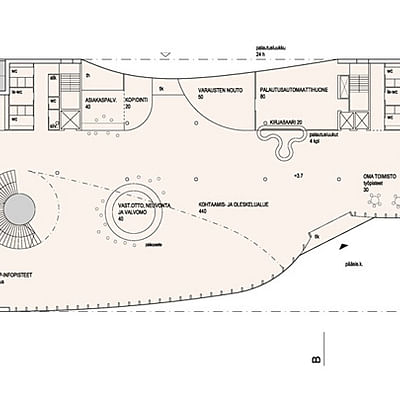

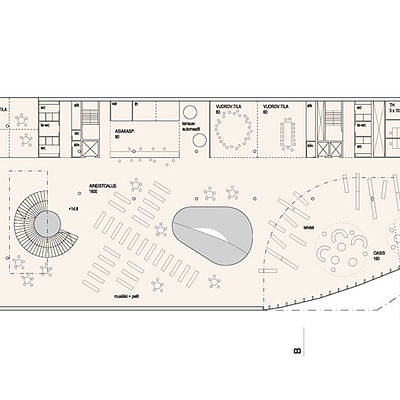



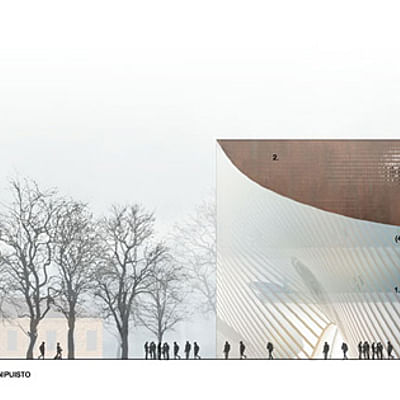


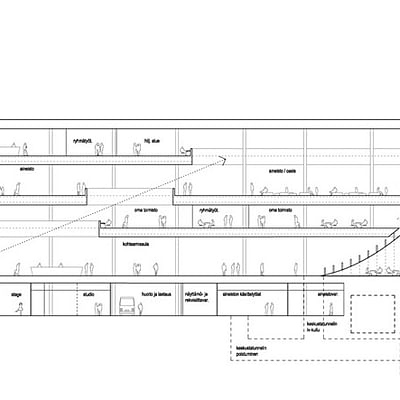
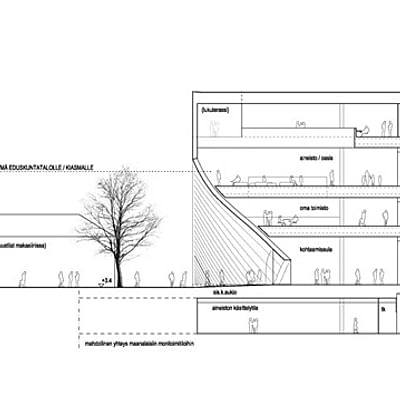

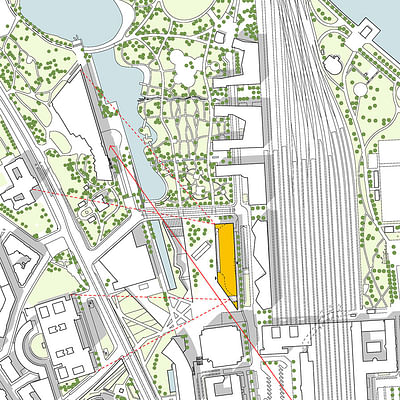
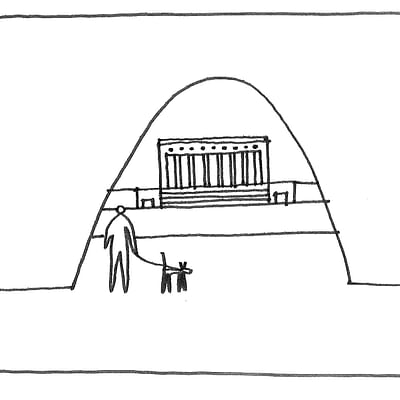

Share
0 Comments
Comment as :